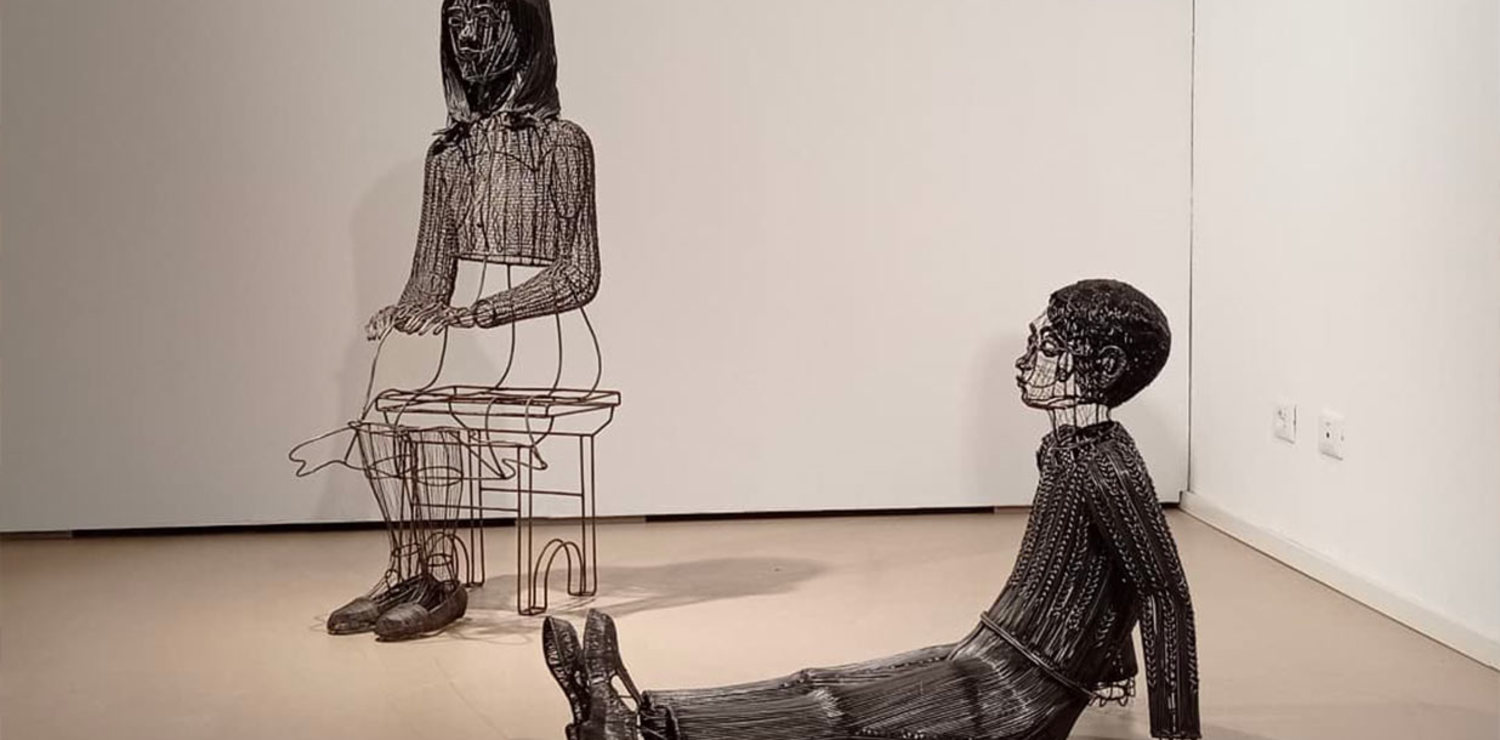Maria Lai's exhibition at the Art Station, CaMuc Museum in Ulassai
Let's learn more about the great Sardinian artist and her important artistic legacy
At the CaMuc Museum in Ulassai, an exhibition dedicated to the artistic legacy of Maria Lai, the great Sardinian artist from Ogliastra. Until 28 February 2025, the museum is hosting Il Gioco dell'arte, an important exhibition that explores the work of six artists who took part in the Biennale of Contemporary Art dedicated to Maria Lai, which ended last October.
The artists on show - Silvia Argiolas, Nicola Caredda, Roberto Fanari, Silvia Idili, Silvia Mei and Paolo Pibi - present new works that explore the deep connection between Maria Lai and Sardinia, her unique poetics and the recurring themes in her artistic production.
The exhibition, curated by Gianni Murtas, Antonello Carboni and Chiara Manca, is part of a long-term cultural journey that began in 2006 with the opening of the ‘Stazione dell'Arte’ Museum of Contemporary Art. Over the years, the museum has become an artistic pole of reference, promoting initiatives and exhibitions that aim to realise Maria Lai's dream: to transform Ulassai into a large open-air museum.
Il Gioco dell'Arte can be visited from Wednesday to Sunday, from 9.30 a.m. to 1 p.m. and from 2.30 p.m. to 7.30 p.m., thus consolidating Ulassai's central role in the panorama of Sardinian contemporary art. Free admission.
 Il gioco dell’arte, Maria Lai
Il gioco dell’arte, Maria LaiWho was Maria Lai?
Maria Lai is one of the most influential Sardinian artists of the 20th century, famous for her textile masterpieces, described by critics as ‘visionary’. Born in 1919 in Ulassai, a small village in Ogliastra, she grew up in a wealthy family, a rarity in an area marked by poverty. Her childhood was full of difficulties, including family mourning and health problems, but also an early approach to art and drawing, which allowed her to develop a unique sensitivity.
In the 1930s, her parents decided to enrol her in middle school, an unusual step for a girl of the time. Here Maria met the writer and teacher Salvatore Cambosu, who introduced her to the evocative power of words and storytelling. In 1939, motivated by a desire for independence, she moved to Rome to study at the Liceo Artistico, and later to Venice, where she attended the Accademia di Belle Arti under the famous Arturo Martini. It was a period of great experimentation, in which Lai refined her technical skills and began to define her poetics.
After graduating, Maria returned to Sardinia, but her career quickly took a national turn. In 1955, she had a solo exhibition in Bari and participated in the Quadriennale in Rome, exhibiting alongside masters such as Lucio Fontana and Alberto Burri. Two years later, he presented a solo exhibition at the Galleria dell'Obelisco in Rome, conquering her place in the Italian art scene.
In the 1960s, Maria moved away from the art exhibition scene, dedicating herself to an intimate and innovative artistic research. It was during this period that her famous Tele cuciti, Libri cuciti , Pani e i Telai were born, works that marked her rapprochement to the Arte Povera movement. This decade of introspection culminated in highly successful exhibitions, such as Tele e Collage at the Galleria Art Duchamp in 1975 and I pani di Maria Lai at the Galleria Il Brandale in Savona in 1977. The critics enthusiastically welcomed these works, which earned her a place at the Venice Biennale in a section dedicated to women's art.
The 1980s and 1990s were the years of consecration and of major public works, often realised in her homeland. One of these was Legarsi alla montagna (1981), an extraordinary performance that involved the entire community of Ulassai: a 27-kilometre-long blue thread linked the inhabitants of the village to Mount Gedili, creating a unique work. During this period, Maria also developed her Geografie and Libri cuciti series, further consolidating her unmistakable style.
In 2006, her dream of making Ulassai a cultural epicentre was realised with the opening of the Stazione dell'Arte Museum of Contemporary Art. Today, the museum holds over one hundred of her works, representing the core of Maria Lai's artistic legacy.
In the last years of her life, Maria achieved international fame, exhibiting her works in prestigious venues around the world. She passed away on 16 April 2013, at the age of 93, leaving an indelible mark on the history of contemporary art and a legacy that continues to inspire generations of artists.
Maria Lai exhibition in America
Until July 2025, Maria Lai is the protagonist of an extraordinary exhibition at the Italian Art Warehouse in Cold Spring, New York. Entitled Maria Lai. A Journey to America and curated by Paola Mura, the museum's artistic director, the exhibition presents one hundred works, some of them previously unseen.
In the 1960s, the artist had embarked on a long journey to the United States and Canada to explore new artistic techniques, dreaming of exhibiting her works overseas, a goal she failed to realise at the time. Today, that dream finally finds fulfilment.
The exhibition explores themes central to Lai's poetics, such as community and the roots of Sardinian tradition, expressed through her bread sculptures and refined textile works, which testify to a deep connection with her land and a universal vision of art.







